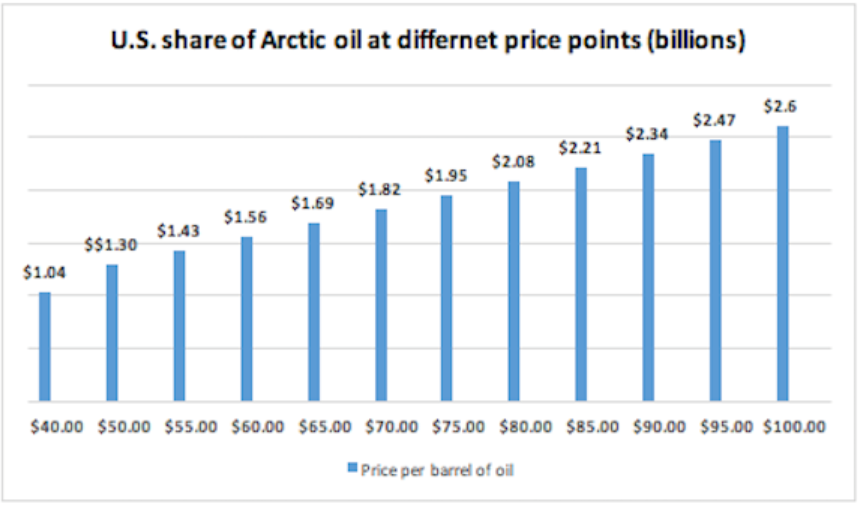Research
May 10, 2017
Executive Order: Offshore Drilling Back On
Summary
- President Trump has signed an Executive Order that will allow for the expansion of drilling for oil and gas in waters off certain coasts in the United States and review locations available for offshore oil and gas exploration and of certain regulations governing offshore oil and gas exploration.
- Under this order, a five-year oil and gas leasing program will be established which will replace the order that was finalized under the Obama Administration last November.
Overview
On April 28th, President Trump signed the America First Energy Executive Order that will allow for the expansion of drilling for oil and gas in waters off certain coasts in the United States. The order calls for a review of the locations available for offshore oil and gas exploration and of certain regulations governing offshore oil and gas exploration. The order will reverse a previous Obama Administration order that permanently banned portions of the Arctic and Atlantic Oceans. The order also calls for the Interior Department to develop a five-year oil and gas leasing program which will replace the order that was finalized under the Obama Administration last November.
This executive order, coupled with three others focusing on agriculture, cybersecurity and veteran’s affairs will bring the number of executive orders signed up to 32 in the first 100 days of the Trump Administration.
Restricting Resources
On December 20th, 2016, the Obama Administration put an eleventh hour ban on offshore drilling in parts of the Arctic and the Atlantic until 2022 and blocked the sale of new offshore oil and gas leases in the Beaufort and Chukchi seas, north of Alaska, between 2017 and 2022[i]. President Obama used an outdated 1953 law, the Outer Continental Shelf Lands Act, which his administration said gave him authority to act unilaterally. The decision has made close to 98 percent of federally owned Arctic Waters unavailable to offshore drilling.
In addition to an already five-year moratorium already cemented in the Atlantic, the decision made portions of the Chukchi and Beaufort seas in the Arctic and a string of canyons in the Atlantic stretching from Massachusetts to Virginia off limits to drilling.
Options
According to a report by the Congressional Research Services , the Trump Administration’s options are more constrained than that of Congress. The administration can change the 2017-2022 leasing program to provide for additional leases sales or remove sales, only by going through the full program development process. Any revision of the five-year program by the administration could not provide for the sales in areas that remained under congressional moratorium or presidential withdrawal. Congress on the other hand cold enact legislation to alter the program. Congress could add new sales to the program or remove scheduled sales. Congress can also mandate lease sales in previously unavailable areas by ending moratoria imposed by Congress or the president[ii].
Recoverable Resources
The US Geological Survey estimates that the Arctic is home to nearly 30 percent of the world’s undiscovered natural gas, which includes 13 percent oil and 22 percent of natural gas liquids. The U.S. Department of the Interior’s Bureau of Ocean Energy Management (BOEM) estimates that Alaska’s outer continental shelf contains 26.21 billion barrels of undiscovered oil and 131.45 trillion cubic feet of undiscovered natural gas.
At today’s price of oil hovering around $49.45, the estimated 26.21 billion barrels of oil would still amount to just under $1.3 trillion dollars. Coupled with the potential 131.45 trillion cubic feet of natural gas, it would allow the U.S. to play an even more dominant role on the global oil and gas market.
The following chart illustrates the gross revenue that could be realized from Arctic oil at different price points.
Regulatory Costs
The regulatory costs and paperwork hours associated with this ban have been massive. A previous report released by the American Action Forum outlined the ten most expensive rules that the Trump Administration would look at repealing right out of the gate, with drilling in the outer continental shelf taking the number three spot with a total regulatory cost of $2.05 billion with 3,930 paperwork hours.
Conclusion
This announcement is a win for the United States. Barring resource rich areas from offshore drilling and lease sales has had a negative economic impact. There are proven technologies to extract these valuable resources in a safe and environmentally sound way which will in turn provide jobs and generate revenue throughout the country while also reducing U.S. dependence on foreign sources of oil and natural gas.
[i] Obama Administration Blocks Arctic Oil Drilling through 2022
[ii] Five Year Program for Federal Offshore Oil and Gas Leasing











